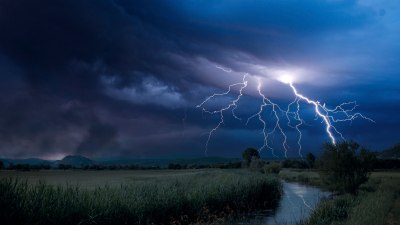The Science of Why Thunderstorms Feel Like Nature’s Therapy Sessions
Explore how thunderstorms provide psychological relief and restoration, revealing their therapeutic effects on mental health.

The phenomenon of thunderstorms has long captivated humanity with its raw power and beauty. Many people report feelings of peace, calmness, and even exhilaration during a storm. This raises an intriguing question: why do thunderstorms often feel like nature's therapy sessions? To answer this, we’ll explore the science behind thunderstorms and their effects on our mental psyche.
Thunderstorms are complex weather systems characterized by lightning, thunder, heavy rain, and sometimes hail. They are born from unstable atmospheric conditions where warm, moist air rises rapidly, creating towering cumulonimbus clouds. These clouds can generate powerful downdrafts and outflows, resulting in strong winds and precipitation. But beyond the scientific explanation lies the psychological impact storms have on humans.
The Sound of Thunder as a Natural Soother
One of the most compelling aspects of thunderstorms is the sound they produce. The rumble of thunder, often described as deeply resonant, provides a unique auditory experience. According to research in sound therapy, low-frequency sounds can promote relaxation and reduce anxiety. The deep, rolling sounds of thunder resemble those found in sound baths or therapeutic music. This acoustic quality might be why storms feel soothing to many, as the body and mind resonate with these natural frequencies.
The Connection to Rain and Mental Wellness
Rain is a common feature of thunderstorms, and its relationship with mental health is noteworthy. Studies have shown that the sound of rain can trigger calming effects and promote focus. Rain can also invoke feelings of nostalgia, reminding people of cozy moments spent indoors. This sense of safety can contribute to the overall therapeutic feeling experienced during a storm. Moreover, rain is essential for maintaining ecosystems, creating a direct connection between nature’s wellbeing and our emotional health.
Light and Mood: The Role of Lightning
Lightning, while undeniably frightening, offers a fascinating interplay between light and mood. Studies suggest that natural light exposure influences mood regulation. The brief flashes of lightning can act as a reset button for neurochemical pathways associated with mood. Furthermore, the contrast between the darkened skies and bright lightning can create a dramatic and awe-inspiring atmosphere, encouraging mindfulness and presence in the moment.
Barometric Pressure and Emotional States
Atmospheric pressure plays a significant role in how we feel. Before a thunderstorm approaches, barometric pressure tends to drop, which can affect mood and energy levels. Some individuals report feeling lethargic or down when the weather is stable, contrasting sharply with the invigorating feeling a storm can bring. The anticipation of a storm can stimulate excitement and boost energy, creating a positive shift in emotional states.
Symbolism of Storms in Cultural Narratives
Throughout history, thunderstorms have symbolized various emotions and experiences in different cultures. They often represent conflict, change, and renewal. This duality can resonate with individuals experiencing their own tumultuous emotions. The power of a storm can serve as a metaphor for personal transformation, helping people process feelings of anger, sadness, or confusion, ultimately leading to catharsis. Engaging with these narratives can deepen their therapeutic effect.
Nature’s Palette: Visual Beauty of Thunderstorms
Visually, thunderstorms can be breathtaking. The dramatic skies, swirling cloud formations, and occasional undulating rainbows can be awe-inspiring. This beauty can facilitate mindfulness and appreciation of nature, allowing individuals to focus on the present moment rather than their stressors. The act of witnessing nature's splendor has been associated with improved mental health outcomes, helping to enrich our human experience in times of chaos.
Psycho-Education: Understanding the Emotional Response
Understanding the reasons behind the emotional reactions to thunderstorms can empower individuals to embrace these experiences more fully. By learning about the physiological and psychological impacts of storms, one can view them not just as weather events but as opportunities for emotional release and healing. Such knowledge can also help individuals integrate natural phenomena into their wellness routines, potentially leading to increased resilience.
Creating Personal Thunderstorm Therapy
For those who find solace in thunderstorms, harnessing their therapeutic potential can be beneficial. Activities like mindful breathing while listening to the rain, journaling thoughts during a storm, or creating art inspired by the visuals of a thunderstorm can amplify its positive effects. Incorporating these practices can promote a sense of control over one’s environment and emotions, showcasing the therapeutic aspects of nature’s unpredictability.
Embracing Nature’s Therapy
In conclusion, thunderstorms hold a unique position in the realm of nature’s therapeutic offerings. The auditory, visual, and emotional impacts intertwine, creating a multifaceted experience that nurtures the mind and spirit. As we continue to explore the relationship between nature and mental wellness, thunderstorms remind us of the importance of embracing the natural world, allowing it to serve as a source of healing and restoration. By recognizing and honoring the therapeutic spirit of thunderstorms, we can better navigate the storms of our own lives, finding strength and serenity amidst chaos.











